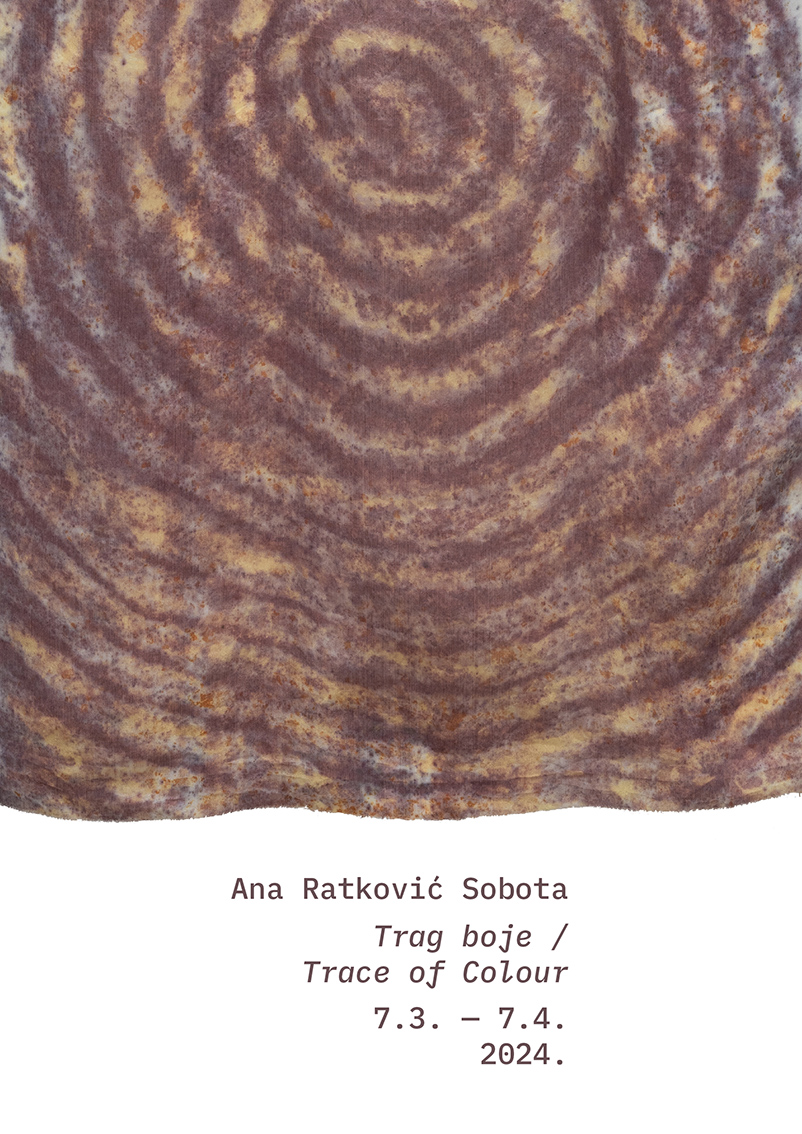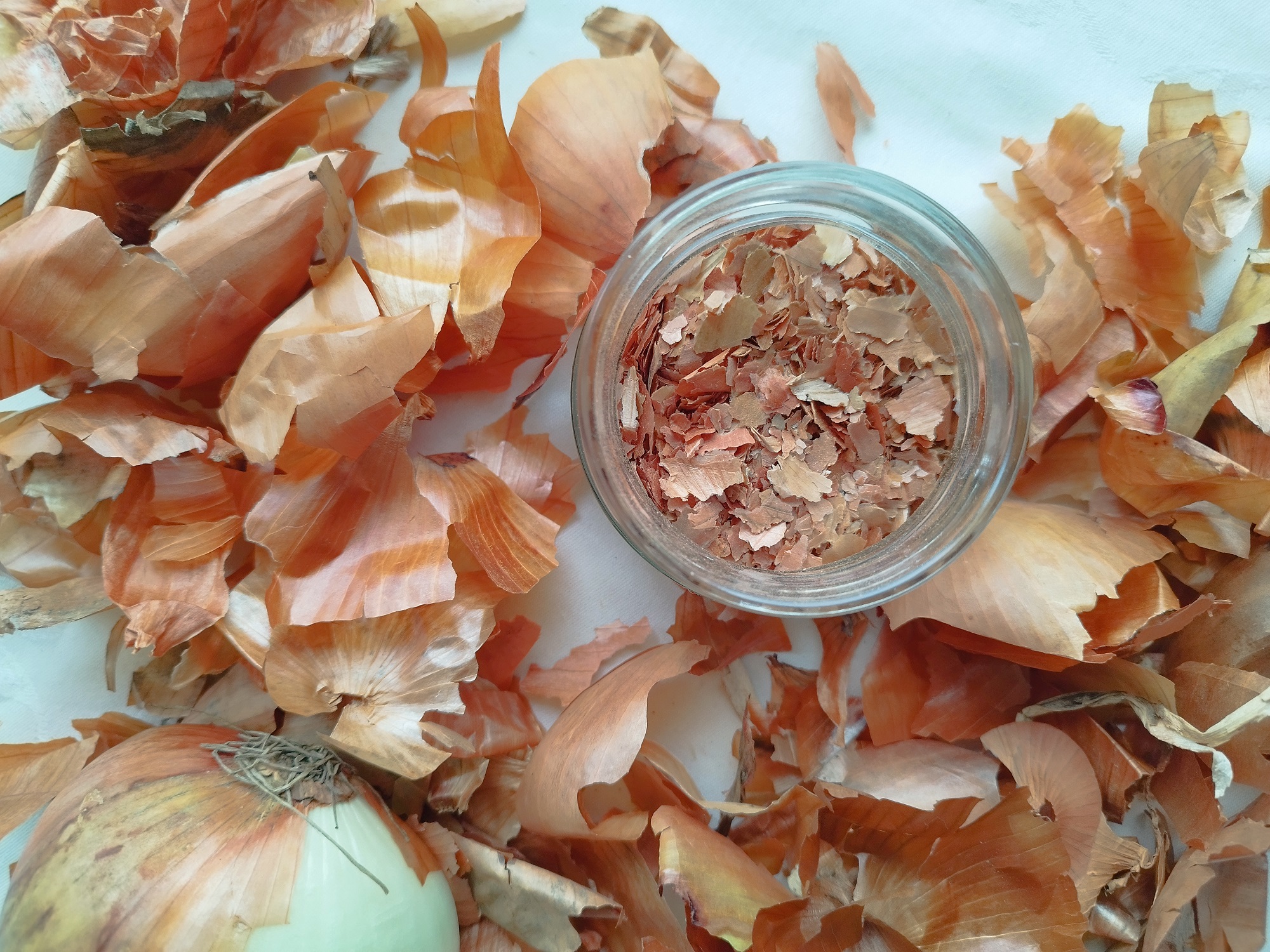Ana Ratković Sobota – TRACE OF COLOUR
Ana Ratković Sobota
TRACE OF COLOUR
March 7 – April 7, 2024
Gallery Prsten

Exhibition opening: Thursday, 7th at 7 pm at Prsten Gallery
Walking along the Ganges, on the ghats of Varanasi, I observe clothes dry, wondering to what extent here in India, the leading country in the production and export of natural dyes, fabric is still dyed predominantly using eco-friendly techniques? After the discovery of synthetic dyes in the mid-19th century, natural dyes were largely forgotten and abandoned as part of archaic cultural practices. Currently, natural dyes are mostly used for colouring food, despite the pressing need to replace synthetic dyes with alternative solutions in the textile industry.
Artist Ana Ratković Sobota fearlessly explores such solutions within the medium of painting, where the experimental process becomes a crucial aspect of her work. Instead of using cotton or ecru, this time the painting canvas becomes silk, a textile hailed as the queen of textiles for its ability to intensely absorb color, strength, and elasticity. After working with the Indonesian batik technique, the artist now explores new methods of applying dyes to textiles, allowing the final result to be influenced by various external factors. Unlike the previously used batik technique, in this series, the artist exclusively uses natural dyes. These dyes are non-toxic, mostly hypoallergenic, and minimally polluting the environment by using materials from natural sources, making the remnants of the production process biodegradable. Before and during the application of natural dyes, silk requires a specific method of preparation: alum is used for adequate fixation and wetting of pigments, vinegar for additional fixation, while citric acid or sodium carbonate is used to modify pigments. The fabric is then wrapped and steamed for an hour to allow the silk base to absorb the dye. Most natural textile dyes are extracted from minerals, insects, and plants, often from roots, fruits, bark, and leaves. Red colour on textiles can be obtained from various plants, with rose madder (Rubia tinctorum) and Manjistha or Indian madder (Rubia cordifolia) standing out among them. In addition to Indian madder and indigo, Ana seeks to use exclusively varieties of plants from the local environment. Therefore, she uses marigold to obtain yellow and orange shades, hibiscus bark powder for the colour of black wine, birch bark for pink, and chokeberry powder for purple. Although most of the processes are left to results that cannot be fully controlled, in some cases, the artist attempts to influence the colour gradient and uses plants to paint reduced motifs of archetypal symbolism. Spirals, circles, and the symbol known as vesica pisces, often carrying sacred meanings, have been used from the time of cave paintings to the present day, representing significant symbolism of creation and the continuous flow of energy. The study of the energetic properties of individual shapes is precisely the focus of the discipline of biogeometry, developed and patented by Dr. Ibrahim F. Karim in Cairo, Egypt, during research initiated in 1968. Biogeometry seeks to explore the impact of specific symbols on qualitatively balancing biological energy systems and harmonising their interactions with the environment.
Ana’s depictions of landscapes have been a lasting inspiration throughout her entire creative body of work. However, in this cycle, only a completely reduced version of “energy landscapes” remains – compressed energy of nature tamed within universal symbols. Instead of depicting the landscape, the artwork becomes its symbolic essence or a kind of reflective imprint, transcending rational explanations.
With a study trip to Yogyakarta in Java, Ana Ratković Sobota intends to continue her exploration of indigenous Indonesian techniques and deepen her understanding of the application and fixation of natural dyes on textiles. The acquired knowledge will then be directed towards the application using local natural materials, incorporating elements of Indonesian cultural tradition. Beyond the realm of visual art, the vanished, reduced landscapes also point to the urgent need to transition to more sustainable ways of living, focused on reducing the destructive use of natural resources. Balancing daily activities, achieving harmony with internal and external environments, and connecting the physical surroundings with spirituality are expanded, and likely the most precious aspects of the artist’s work who boldly navigates through exploratory processes.
Sara Mikelić





